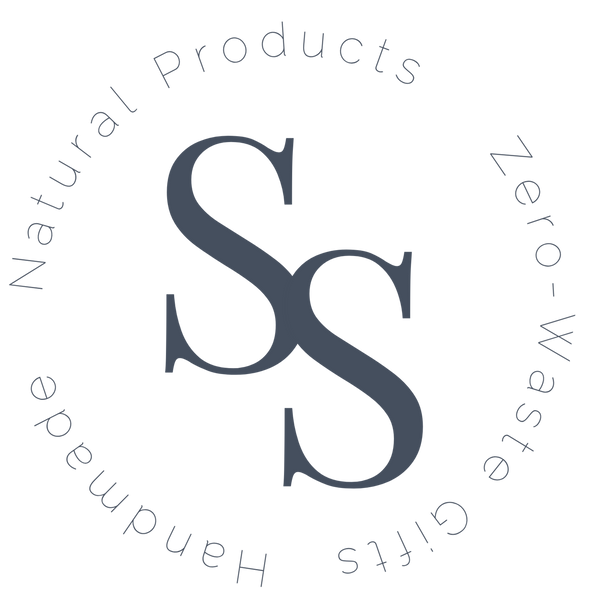If there’s one word that tends to stop people in their tracks when learning about handmade soap, it’s lye.
It sounds harsh. It sounds chemical. It sounds like something you’d want far away from your skin.
But here’s the truth: without lye, there is no soap.
None.
That rich, creamy bar that leaves your hands soft, that satisfying lather that rinses clean, all of it begins with lye.
What Lye Really Is
Let’s clear this up first.
Lye, also known as sodium hydroxide (NaOH) for bar soap and potassium hydroxide (KOH) for liquid soap, is a natural compound that’s been used for centuries to make soap through a reaction called saponification.
During this process, lye combines with oils and butters to create two things: soap and glycerin.
Once this reaction is complete, there’s no lye left in your finished bar, just a mild, moisturizing cleanser that’s completely safe for your skin.
A Little History: Where Lye Comes From
Before commercial production, lye was made by soaking wood ash in water, the original “old-fashioned” way of making soap. Today, we use purified, food-grade lye that’s stable, consistent, and safe to handle when measured properly.
So yes, lye sounds intimidating, but it’s been part of traditional soapmaking since the very beginning of human cleanliness.
It’s what turns fats and oils into something usable, luxurious, and skin-friendly.
Myth vs. Reality: Understanding Lye
Myth 1: “Lye is dangerous for your skin.”
➡ Reality: Raw lye can be caustic, but after saponification, there’s no lye left in the finished soap. It’s fully reacted and transformed.
Myth 2: “I only buy lye-free soap.”
➡ Reality: That’s marketing speak. Even melt-and-pour bases or commercial soaps started with lye, they just don’t tell you.
Myth 3: “Lye makes soap harsh.”
➡ Reality: Poorly formulated soap can be harsh, but properly balanced handmade soap is incredibly gentle, especially when superfatted with extra oils.
Myth 4: “Lye is synthetic.”
➡ Reality: Lye is a naturally occurring alkali that can be derived from natural sources. The key is how it’s used and what remains afterward (spoiler: nothing).
How Sea Spray Soap Uses Lye Safely
At Sea Spray Soap, we take formulation seriously.
Every batch begins with carefully measured Atlantic Ocean water, premium oils and butters, and just the right amount of lye to achieve perfect balance.
We calculate our lye ratios down to the gram, because the science matters.
Here’s what makes our process safe:
- Balanced Formulation: Every molecule of lye binds with oils completely, no residue, no irritation.
- Superfatting: We add extra butters and oils that remain in the bar for extra moisture.
- Curing Time: Each bar cures naturally for weeks, allowing it to harden and mellow into a gentle, long-lasting cleanser.
The result: a bar that feels luxurious, rinses clean, and respects your skin’s natural balance.
For Sensitive Skin: Why Real Soap Works Better
If you’ve ever said, “Everything irritates my skin,” you’re not alone.
Many commercial “soaps” are actually detergent bars filled with synthetic foaming agents that strip your skin’s natural barrier.
Handmade soap made with real lye, natural oils, and glycerin is different. It:
- Cleans without over-drying
- Supports your skin’s moisture balance
- Contains no harsh sulfates or artificial fillers
So if your skin feels tight or itchy after washing, switching to real soap might be the quiet transformation you’ve been looking for.
The Real Chemistry of Clean
When you understand what lye does, you realize it’s not the villain, it’s the catalyst.
It’s the spark that turns simple oils into something new and meaningful.
Soapmaking is both art and chemistry, a reminder that science and nature can work beautifully together.
And that’s what we celebrate in every Sea Spray Soap bar: luxury, honesty, and the ocean’s touch.
Common Questions About Lye in Soap
Is lye dangerous to use?
Raw lye must be handled carefully, but when used correctly, it’s perfectly safe. We wear gloves, goggles, and precision-measure every batch. Once saponified, no lye remains.
Can you make soap without lye?
No. Even “melt and pour” soap bases were originally made using lye, it’s just part of the process you don’t see.
Is lye soap good for sensitive skin?
Yes, when formulated with gentle oils and cured properly, lye soap is often the best choice for sensitive or reactive skin types.
The Takeaway: Don’t Fear the Chemistry
Lye isn’t scary, it’s science in service of self-care.
It’s what transforms nature’s oils into a luxurious, skin-loving cleanser.
So next time you hold a bar of handmade soap, remember what went into it: precision, patience, and a touch of ocean magic.
→ Explore our ocean-inspired handmade soaps for sensitive skin




